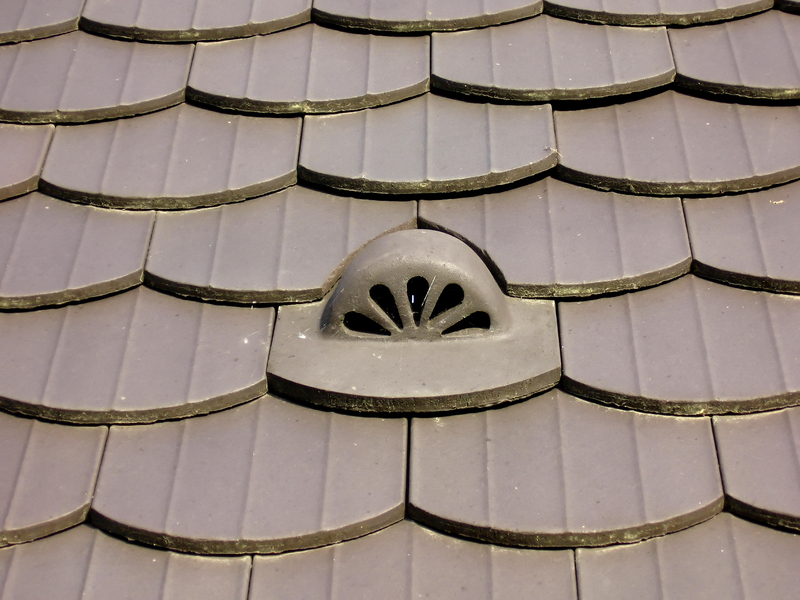Perfectly Washed: Avoid Damage in Sofa Cover Cleaning
Posted on 22/05/2025
Perfectly Washed: Avoid Damage in Sofa Cover Cleaning
Keeping your sofa covers spotless can refresh your entire living space, but improper sofa cover cleaning risks unsightly damage, shrinkage, or fading. With the right approach, you can achieve that perfectly washed look, safeguarding fabric quality and prolonging your furniture's lifespan. In this comprehensive guide, you'll discover how to avoid damage during sofa cover washing, explore the best cleaning methods for various materials, and learn essential care tips for pristine, long-lasting results.

Why Proper Sofa Cover Cleaning Matters
Your sofa is the centerpiece of most living rooms, bearing daily use and attracting dust, pet hair, spills, and stains. Neglect leads to stubborn grime, unpleasant odors, and fabric degradation. Yet, overzealous or improper cleaning--such as using harsh detergents or washing at the wrong temperature--can damage sofa covers irreparably.
- Preserves appearance: Routine yet gentle cleaning keeps colors bright and fabric fibers strong.
- Prolongs lifespan: Well-maintained covers resist wear, tear, and fade.
- Removes allergens: Washing eliminates dust, pet dander, and molds that affect indoor air quality.
- Reduces replacement costs: Perfectly washed covers mean less frequent new purchases.
Understanding Sofa Cover Types and Care Labels
Before you even think about washing, identify your sofa cover material and inspect its care label. Different fabrics--cotton, linen, polyester, blends, velvet, microfiber, and leather--require tailored approaches for cleaning. Ignoring the recommended method may lead to shrinkage, color bleeding, or loss of softness.
Decoding Care Symbols
- Washing symbol: Indicates if machine washing is allowed and at which temperature.
- Hand-wash icon: Only gentle, manual cleaning is advisable.
- Circle with P or F: Dry cleaning is recommended.
- Triangle: You can use bleach (if not crossed out).
- Iron symbol: Specifies safe ironing temperatures if the material creases.
If your sofa covers are removable and labeled "machine washable," congrats! If not, consider professional cleaning.
How to Wash Sofa Covers Without Causing Damage
1. Pre-Wash Preparation
Preparation is key to achieving that perfect wash and avoiding damage:
- Remove dust and debris: Use a vacuum with a brush attachment to remove loose dirt.
- Spot-treat stains: Use a mild upholstery cleaner or a solution of diluted dish soap to individually work out spots before comprehensive washing.
- Zip, fasten, and turn inside out: This prevents snagging during the wash cycle.
- Test colorfastness: Dab a small, inconspicuous area with damp white cloth and observe for dye transfer.
2. Choosing the Right Cleaning Method
Choose one of the following sofa cover washing methods based on the fabric type:
-
Machine Washing
- Suited for: Most cotton, linen, and some polyester covers.
- Steps:
- Select a gentle, cold or lukewarm cycle (max 30?C).
- Use a mild, color-safe detergent.
- Wash covers separately from other laundry.
- Avoid fabric softeners or bleach (unless label permits).
-
Hand Washing
- Suited for: Delicate fabrics like wool, silk blends, or loose weaves.
- Steps:
- Fill a tub or sink with cool water and add gentle detergent.
- Submerge the cover and softly agitate; never wring or stretch.
- Rinse until water runs clear; gently squeeze out excess water.
-
Dry Cleaning
- Suited for: Fabrics labeled 'dry clean only' (e.g., some velvets, silk, or blends containing acetate/rayon).
- Steps:
- Take to a trusted professional cleaner.
- Spot clean minor stains using solvent-based products designed for upholstery.
3. Drying Methods: Avoid Shrinkage and Distortion
How you dry washed sofa covers is just as vital as washing them:
- Air Drying: Always preferred. Lay covers flat on a clean towel in a shaded spot. This prevents stretching and discoloration from sun exposure.
- Line Drying: Hang covers over a wide drying rack, ensuring even weight distribution to keep shape. Avoid peg marks.
- Machine Drying: Rarely recommended--only for specific, robust synthetic fabrics that won't shrink. Use the lowest, coolest setting and remove covers while still slightly damp.
- Never wring out covers--excess twisting deforms fabric fibers.
Pro tip: Replace covers on sofa cushions while slightly damp for perfect fit and fewer creases.
Common Sofa Cover Fabric Types: Best Cleaning Approaches
Understanding your sofa cover's material ensures perfect washing and long-lasting durability. Here's a breakdown:
- Cotton: Machine wash in cold water, gentle cycle. Air dry to prevent shrinkage.
- Linen: Delicate wash or hand wash; lay flat to dry. Prone to creasing but durable.
- Polyester/Blends: Resilient to machine washing, avoid excessive heat.
- Microfiber: Machine or hand wash with mild soap. Air dry; avoid dryer as static builds up.
- Velvet: Dry clean is safest, though some modern velvets allow gentle hand washing.
- Leather or Faux Leather: Never wash. Instead, wipe gently with damp cloth and use specialized cleaners.
Top Tips to Prevent Sofa Cover Damage
- Read instructions: Even "universal" methods may not suit your particular cover.
- Pre-treat stains immediately: The sooner you address spots, the less likely they are to become permanent.
- Smooth out wrinkles while damp: Prevents excessive creasing when dry.
- Rotate covers regularly: If you have spares, swap them occasionally for even wear and easier maintenance.
- Avoid direct heat and sunlight: Heat degrades fabric, while UV fades colors.
- Update your cleaning kit: Use color-safe detergents formulated for delicate or upholstery fabrics.
- Do not overload your washing machine: This causes friction and poor cleaning.
- Handle zippers, buttons, and trims with care: Fasten all and turn inside out before washing.
- Monitor drying carefully: Overdrying causes shrinkage; underdrying causes odor and mildew risk.
Dealing with Common Cleaning Challenges
Every sofa cover presents its own unique cleaning challenges. Here's how to conquer a few of the most common whilst avoiding damage:
- Stubborn stains: Use an upholstery-friendly stain remover; always patch test first.
- Pilling: Remove with a fabric shaver; avoid harsh rubbing that worsens pilling.
- Pet hair: Remove before washing using lint rollers or rubber gloves.
- Color fading: Wash in cold water and keep out of direct sunlight. Use color-restoring laundry detergents for faded covers.
- Wrinkling: Use a steamer or gentle ironing (if care tags allow).
When to Hire Professional Sofa Cover Cleaning
If you're ever in doubt about the proper method, or if your sofa cover is labeled "dry clean only", it's wise to trust a specialist. This is especially true for expensive, antique, or complex fabrics. Professionals use techniques that minimize risk of shrinkage, distortion, and ensure deep, hygienic cleaning.
- Specialty upholstery cleaning: For velvet, silk, brocade, or intricately embroidered fabrics.
- Deep odor removal: Professionals use enzymes and machines unavailable to home users.
- Color renewal: Professional-grade solutions can brighten and restore faded covers.
The extra cost often outweighs the risk of ruining an irreplaceable cover.
Maintaining Perfectly Washed Sofa Covers: Ongoing Care
Achieving that "just-washed" look is only half the battle--consistent care is crucial for spot-resistant, fresh-smelling, and damage-free covers year round.
- Regularly vacuum: At least once a week using a soft brush attachment to prevent buildup.
- Quickly treat spills: Blot gently with a clean, absorbent cloth--never rub, which drives stains deeper.
- Use throws and blankets in high-use areas: These take the brunt of dirt, making cover washes less frequent.
- Wash hands before use: Reduces oils and chemicals transferred to the fabric surface.

Frequently Asked Questions: Perfectly Washed Sofa Cover Cleaning
-
How often should you wash sofa covers?
Ideally every 3-6 months, or more frequently for high-traffic areas, homes with pets, or allergy sufferers. -
Can all sofa covers be machine washed?
No, always check care labels. Some covers suit only hand-washing or dry-cleaning. -
Is it safe to use bleach?
Only if the care label allows and the fabric is white or colorfast. Otherwise, risk of fading and weakening fibers is high. -
How do you avoid shrinking sofa covers?
Wash in cold water, air dry, and never tumble dry unless the label explicitly states it's safe. -
What if covers are not removable?
Spot clean with suitable solutions, or consider professional in-home upholstery cleaning services.
Conclusion: Achieve the Perfect Wash, Every Time
Your sofa deserves the best. By following these comprehensive, expert-approved methods, you can keep sofa cover cleaning damage-free and effective, ensuring your lounge looks its absolute best. Always prioritize fabric type and care instructions; never rush the process. With routine, gentle maintenance, and a bit of know-how, those trouble-free, perfectly washed sofa covers are easily within reach--bringing freshness, comfort, and style to your home for years to come.
Ready to give your sofa covers the best clean of their life? Remember: thoughtful preparation, gentle methods, and protective care are the keys to success!



